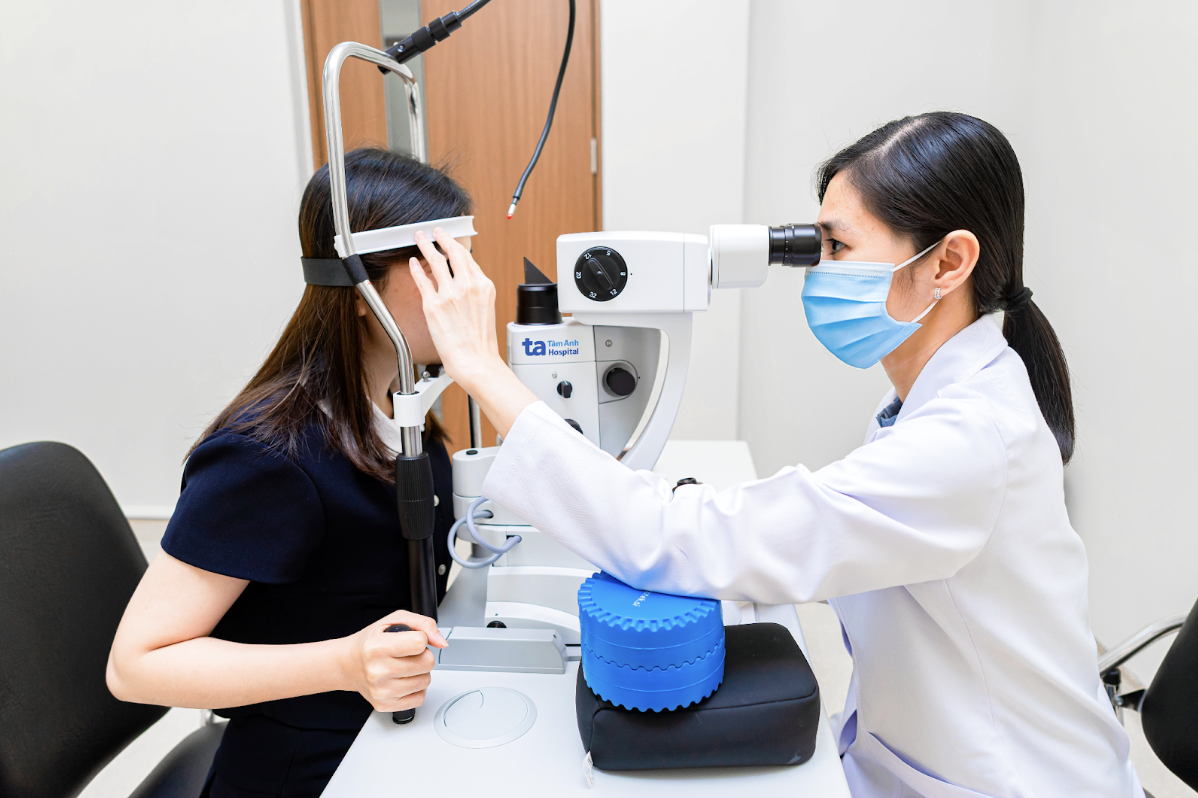According to Dr. Tang Ngoc Anh, Deputy Head of the Ophthalmology Department at Tam Anh General Hospital's High-Tech Eye Center in Ho Chi Minh City, refractive surgeries like FEMTO Pro, SMILE Pro, and Phakic offer optimal vision correction and high safety for nearsighted individuals. However, eligibility depends on factors like refractive condition, corneal characteristics, and overall eye health. A comprehensive screening is crucial to assess treatment suitability and post-operative visual recovery, ensuring the safest and most appropriate method.
Candidates must be 18 or older with stable vision for at least 6-12 months (no more than 0.5 diopters change annually). Surgery is not recommended for those with fluctuating vision, particularly students, due to the risk of further vision decline post-op.
Corneal thickness, shape, and condition are also vital. Individuals with corneal abnormalities, such as keratoconus, risk severe complications like corneal ectasia, leading to irreversible vision loss. Those with corneal dystrophies are generally contraindicated for refractive surgery.
For those with thin corneas (e.g., under 480 microns), doctors carefully assess the remaining stromal thickness and other risk factors before deciding. Dr. Anh notes that thin corneas aren't an absolute contraindication but require caution. Techniques like SMILE, which preserves more corneal tissue, may be preferred.
Dry eye and overall health are also considered. Individuals with severe dry eye, chronic allergic conjunctivitis, or autoimmune diseases like lupus or rheumatoid arthritis are usually not recommended for LASIK due to increased risks of poor wound healing and post-operative complications.
 |
Dr. Ngoc Anh examines a woman's eye structure. Photo: Tam Anh General Hospital |
Dr. Ngoc Anh examines a woman's eye structure. Photo: Tam Anh General Hospital
Those with uncontrolled glaucoma, visually significant cataracts, or retinal diseases (e.g., macular degeneration, macular holes, retinal detachment, diabetic retinopathy) should also avoid refractive surgery. These conditions require prior treatment and stabilization before LASIK can be considered.
Doctors also consider individual factors like occupation, high visual demands in fluctuating light conditions, or the need for absolute visual accuracy. The desire for multifocal vision (near and far), especially in those over 40 with presbyopia, is also taken into account.
Dr. Anh advises those considering LASIK to seek comprehensive evaluations and consultations at reputable hospitals before making a decision.
Nhat Thanh
| Readers can submit questions about ophthalmological diseases here for doctors to answer. |












